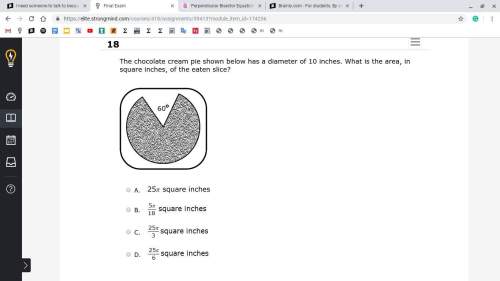
Mathematics, 25.02.2020 22:56 samueltaye
Point estimates often need to be nested in layers of analysis, and it is the Invariance Principle that provides a pathway for doing so. An example would be estimating Mu after having to estimate Alpha and Beta for some distributions. In simpler statistics class exercises (like those we've seen up until now), this is typically avoided by providing the lower level parameters within exercises or problems (e. g. asking you for Mu by giving you the Alpha and Beta). The only real options we've had prior to this unit for estimating lower level parameters has been trial-and-error: collecting enough data to form a curve that we then use probability plots against chosen parameter values until we find a combination of parameters that "fits" the data we've collected. That approach works in the simplest cases, but fails as our problem grows larger and more complex. Even for a single distribution (e. g., Weibull) there are an infinite number of possible Alpha-Beta combination. We can't manually test them all.
Point estimation gets us around all of that by providing the rules needed to actually calculate lower level parameters from data. We sometimes need to be able to collect a lot more data to use this approach, but it's worth it. We'll be able to calculate more than one possible value for many parameters, so it's important that we have rules for selecting from among a list of candidates.
Discuss what some of those rules are, and how they get applied in your analysis. If an engineering challenge includes "more than one reasonable estimator," how do engineers know which to pick, and what issues arise statistically and in engineering management when making those choices?

Answers: 1


Another question on Mathematics

Mathematics, 21.06.2019 12:30
Asystem of equation is shown below 6x - 2y equals 3 . and 5x + 3y equals 4. would you solve by substitution or elimination? and why
Answers: 2

Mathematics, 21.06.2019 21:00
Sue's average score for three bowling games was 162. in the second game, sue scored 10 less than in the first game. in the third game, she scored 13 less than in the second game. what was her score in the first game?
Answers: 2


You know the right answer?
Point estimates often need to be nested in layers of analysis, and it is the Invariance Principle th...
Questions

Mathematics, 03.12.2020 07:20





Computers and Technology, 03.12.2020 07:20

Mathematics, 03.12.2020 07:20



Mathematics, 03.12.2020 07:20





Mathematics, 03.12.2020 07:20

Mathematics, 03.12.2020 07:20

Biology, 03.12.2020 07:20


Mathematics, 03.12.2020 07:20





